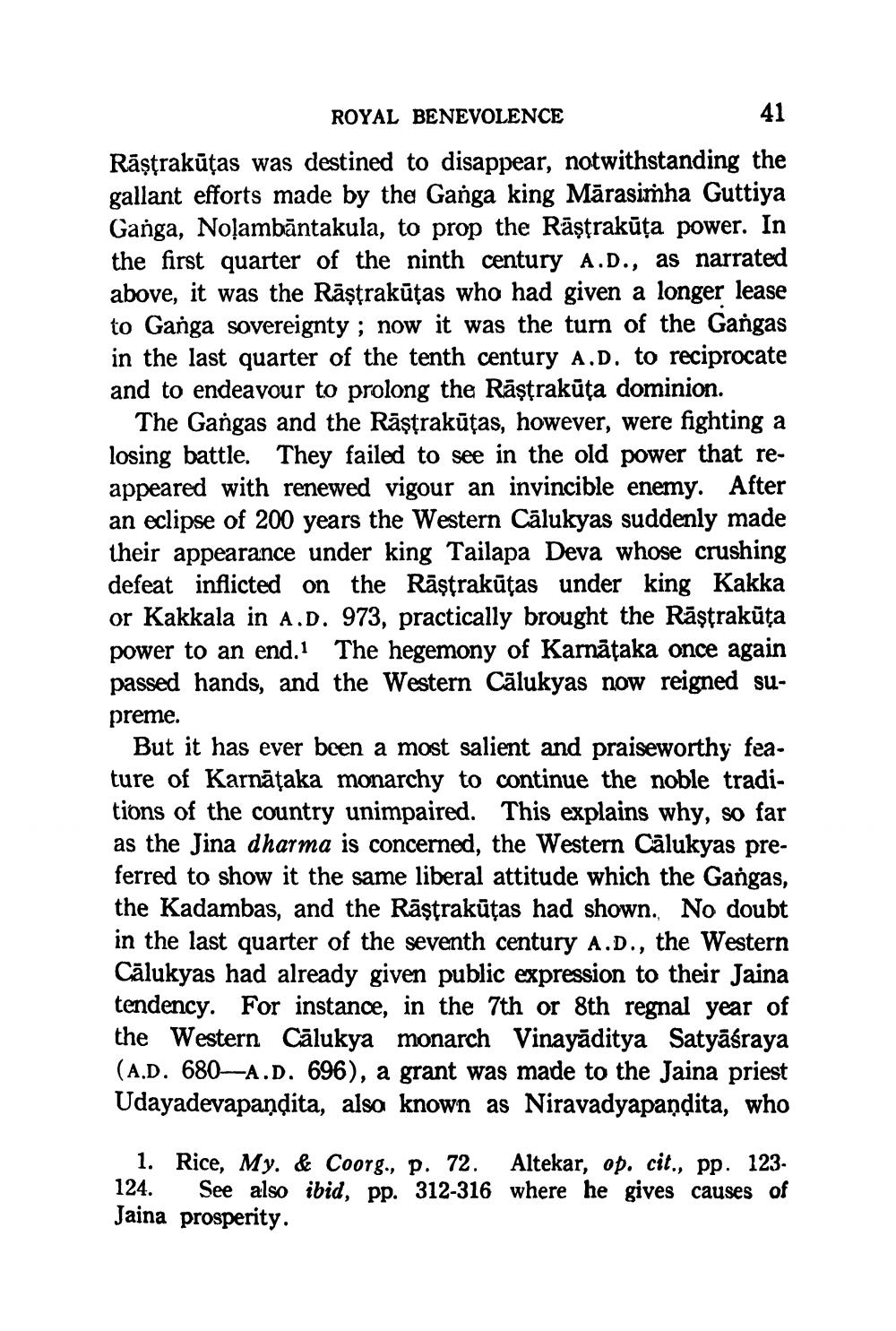________________
ROYAL BENEVOLENCE
41
Rāṣṭrakūtas was destined to disappear, notwithstanding the gallant efforts made by the Ganga king Marasimha Guttiya Ganga, Nolambāntakula, to prop the Rāṣṭrakūṭa power. In the first quarter of the ninth century A.D., as narrated above, it was the Rāṣṭrakūtas who had given a longer lease to Ganga sovereignty; now it was the turn of the Gangas in the last quarter of the tenth century A.D. to reciprocate and to endeavour to prolong the Rāṣṭrakūta dominion.
The Gangas and the Raṣṭrakūtas, however, were fighting a losing battle. They failed to see in the old power that reappeared with renewed vigour an invincible enemy. After an eclipse of 200 years the Western Calukyas suddenly made their appearance under king Tailapa Deva whose crushing defeat inflicted on the Raṣṭrakūtas under king Kakka or Kakkala in A.D. 973, practically brought the Rāṣṭrakūṭa power to an end.1 The hegemony of Karnataka once again passed hands, and the Western Calukyas now reigned supreme.
But it has ever been a most salient and praiseworthy feature of Karnataka monarchy to continue the noble traditions of the country unimpaired. This explains why, so far as the Jina dharma is concerned, the Western Câlukyas preferred to show it the same liberal attitude which the Gangas, the Kadambas, and the Rāṣṭrakūṭas had shown. No doubt in the last quarter of the seventh century A.D., the Western Calukyas had already given public expression to their Jaina tendency. For instance, in the 7th or 8th regnal year of the Western Calukya monarch Vinayaditya Satyāśraya (A.D. 680-A.D. 696), a grant was made to the Jaina priest Udayadevapaṇḍita, also known as Niravadyapandita, who
1. Rice, My. & Coorg, p. 72. Altekar, op. cit., pp. 123124. See also ibid, pp. 312-316 where he gives causes of Jaina prosperity.




